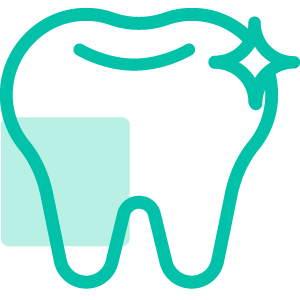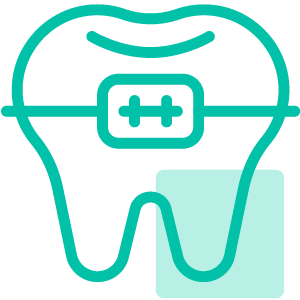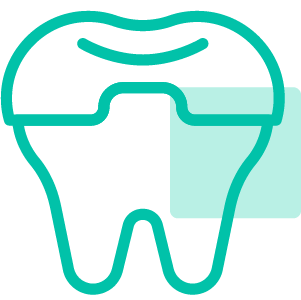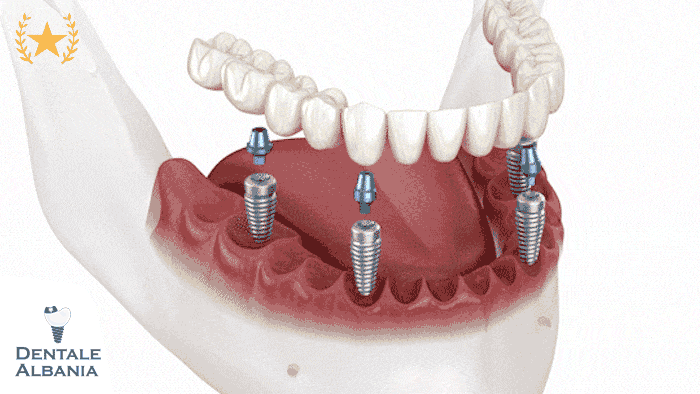Table of Contents
ToggleBone Grafting for Dental Implants: Why It Matters for Implant Success

- Bone grafting plays a vital role in the long-term success of dental implants.
- It provides the structural support needed for the implant to anchor securely.
- Osseointegration, the process by which the implant fuses with the jawbone, requires a stable and dense bone foundation.
- Missing or deteriorated bone can lead to loose or failed implants without proper grafting.
- Bone grafts restore lost volume in the jaw, allowing the implant to function just like a natural tooth root.
- Common reasons patients need a bone graft include long-term tooth loss, gum disease, infections, or trauma that caused jawbone deterioration.
- In many cases, patients aren’t immediate candidates for implants due to bone resorption and must undergo grafting first.
- The link between jawbone density and implant eligibility is direct—patients with adequate bone height and width are more likely to have predictable and stable outcomes.
What Is a Dental Bone Graft?
- A dental bone graft is a surgical procedure in which bone or bone-like material is added to your jaw.
- Its primary purpose is to build up the bone in areas where it has been lost or weakened.
- In implant dentistry, it allows your jaw to support implants where bone is too thin or soft.
- The dentist or oral surgeon will place the grafting material in the area where bone is missing.
- Over time, your body integrates the graft, forming strong, healthy new bone.
- The ultimate goal is to create a solid foundation that enables successful implant placement.
What Materials Are Used for Bone Grafting in the Mouth?
Bone grafting materials vary depending on patient needs, preferences, and the clinical situation. Each material offers unique advantages and potential limitations. Here’s what you need to know:
- There are four primary types of dental bone graft materials used in the mouth:
- Autograft – Bone harvested from the patient’s own body, typically the jaw, chin, or hip.
- Allograft – Donor bone sourced from another human, usually processed and sterilized from a tissue bank.
- Xenograft – Bone from a different species, typically bovine (cow) or porcine (pig), processed for safe use in humans.
- Alloplast – Synthetic, lab-made materials such as hydroxyapatite or calcium phosphate.
- Autograft (your own bone):
- Pros: High success rate due to biocompatibility; promotes natural bone regeneration.
- Cons: Requires an additional surgical site, leading to more discomfort and recovery time.
- Allograft (human donor bone):
- Pros: No need for second surgical site; widely used and clinically effective.
- Cons: Slightly lower osteogenic potential than autograft.
- Xenograft (animal bone):
- Pros: Readily available; supports bone volume and scaffolding.
- Cons: May take longer to integrate; not suitable for all patients (ethical or religious concerns).
- Alloplast (synthetic grafts):
- Pros: No biological origin; safe and predictable integration in many cases.
- Cons: May not be as effective for large grafts or in areas requiring fast regeneration.
- Popular commercial products:
- Bio-Oss® (bovine-derived xenograft): Widely used for its structural support and slow resorption rate.
- Bio-Gide® (porcine-derived collagen membrane): Often used to cover the graft area to protect it during healing.
- Membranes used in grafting:
- Resorbable membranes dissolve over time and don’t require removal.
- Non-resorbable membranes may offer more control but require a second procedure for removal.
Choosing the right graft material is crucial to implant success and depends on factors like graft size, location, patient health, and dentist preference.
What Are the Types of Bone Grafting Procedures?
Dental bone grafting isn’t one-size-fits-all. There are several types of grafting procedures, each tailored to the level of bone loss, location in the mouth, and timing in relation to implant placement. Here’s a breakdown:
What Is Minor Bone Grafting?
- Used for small bone defects where minimal volume is needed—often during or just before implant placement.
- Bone is typically harvested from the patient’s own jaw, usually the chin or back of the mouth near the wisdom teeth.
- The procedure is performed under local anaesthesia, often with optional sedation for added comfort.
- Surgical time is short, usually around 1 to 1.5 hours.
- Healing is quick, with most patients resuming daily activities within a day or two.
- Stitches are removed in 7–10 days, and full healing may take a few months depending on graft size.
What Is Major Bone Grafting?
- Required when bone loss is significant, such as after long-term tooth loss or severe trauma.
- Bone is taken from other parts of the body, commonly the hip, tibia, or skull.
- Performed under general anaesthesia, often in a hospital setting.
- Hospital stay may be necessary, especially if the hip is used as a donor site.
- Recovery time is longer, with some soreness in the donor site for several weeks.
- Healing takes 4 to 6 months before an implant can be placed.
What Is a Sinus Lift?
- Necessary for implants in the upper back jaw, where sinuses may limit bone height.
- Bone is added beneath the sinus membrane, lifting it to make room for the graft.
- Can be done before or at the same time as implant placement, depending on bone availability.
- Healing takes 6 to 9 months, though some cases may allow simultaneous implant placement.
What Is Ridge Preservation?
- Performed immediately after a tooth extraction to prevent bone shrinkage.
- Fills the empty socket with bone graft material to maintain ridge shape and volume.
- Maintains implant eligibility by preventing collapse of the alveolar ridge.
- Commonly combined with collagen membranes to protect the area during healing.
Do All Dental Implants Require Bone Grafting?
Not every patient undergoing dental implant surgery needs a bone graft. Whether grafting is necessary depends on several factors, including the quality and volume of your existing jawbone.
- Bone grafting is only needed when there is not enough natural bone to securely anchor a dental implant.
- Your dentist will evaluate your bone structure using digital imaging and 3D scans to assess if bone grafting is required.
- In cases of sufficient bone height and density, implants can be placed without any grafting at all.
- Factors such as age, time since tooth loss, and presence of gum disease influence whether grafting is necessary.
Are There Alternatives If Bone Grafting Isn’t Possible?
- All-on-4 implants: A full arch restoration technique that uses just four implants placed at specific angles to maximize existing bone without grafting.
- Zygomatic implants: These longer implants anchor into the cheekbone (zygoma) and are used when upper jaw bone is severely resorbed.
- Short or mini implants: Used in certain cases where standard-length implants can’t be supported but some bone remains.
These alternatives offer hope for patients with severe bone loss who wish to avoid or cannot undergo grafting procedures.
How Can a Dentist Tell If You Need a Bone Graft?
Before planning a dental implant procedure, your dentist needs to determine whether your jawbone is strong and dense enough to support it. Here’s how they assess that:
- Clinical Examination: A dentist will begin with a detailed oral examination, checking for gum recession, loose teeth, or visible signs of bone loss.
- 3D Imaging (CBCT Scan): A cone beam computed tomography (CBCT) scan provides a 3D view of your jaw, allowing precise evaluation of:
- Bone height
- Bone width
- Bone density
- X-rays May Not Be Enough: While traditional dental X-rays give a general idea, they lack the precision of CBCT scans.
- Implant Planning Software: Some clinics use digital simulation tools to plan implant placement virtually, which also helps assess bone condition.
- Gum and Bite Assessment: Dentists also evaluate gum health and bite alignment, which may indirectly signal underlying bone issues.
Early detection is essential. If you wait too long after tooth extraction, bone loss progresses — making grafting more complicated. That’s why it’s important to consult a professional as soon as a tooth is lost.
Can You Get a Bone Graft Years After Tooth Extraction?

Yes, bone grafting is still possible even years after a tooth has been removed — but the process can become more complex the longer you wait. Here’s what you need to know:
- Delayed Grafting Is Common: Many patients come in for implants years after losing a tooth. Bone grafting can still be performed successfully in these cases.
- Bone Shrinks Over Time: After a tooth is extracted, the jawbone no longer receives stimulation from chewing. This leads to bone resorption, a natural shrinking process that begins immediately and worsens over time.
- More Extensive Grafting May Be Needed: If the bone loss is significant, your dentist may need to perform major bone grafting or consider alternative implant solutions like zygomatic implants.
- Longer Healing Time: In delayed cases, healing may take 6–12 months, especially if the graft is large or involves the sinus or hip.
- Success Rates Remain High: Even years later, bone grafts are highly effective — especially when combined with proper planning and aftercare.
Tip: If you’ve had an extraction and are considering implants in the future, ask your dentist whether ridge preservation could help maintain bone volume immediately after the extraction.
How Painful Is a Bone Graft for Dental Implants?
Pain is one of the most common concerns for patients considering a dental bone graft. The good news? Most people find the discomfort to be minimal — especially for minor procedures.
- Pain Levels Depend on Graft Type:
- Minor bone grafts, typically done under local anaesthetic, cause mild discomfort similar to a tooth extraction.
- Major grafts, like those using hip bone, involve more healing and may cause moderate post-op pain.
- Local Anaesthesia & Sedation Options:
- During the procedure, your mouth will be numbed.
- Sedation may also be offered if you’re anxious, further reducing awareness of the surgery.
- Post-Op Discomfort Is Manageable:
- Most patients use over-the-counter medications such as paracetamol or ibuprofen.
- For more extensive grafts, dentists may prescribe stronger pain relief.
- Pain Timeline:
- Discomfort is typically strongest in the first 24–72 hours.
- Most swelling and soreness subside within a week.
- What Causes More Pain? Implant or Bone Graft?:
- In most cases, implants are less painful than the grafting itself — particularly if the graft requires harvesting bone from another site.
- Tips for Minimising Pain:
- Use ice packs during the first 6 hours.
- Stick to soft foods and avoid irritating the surgical site.
- Take pain medication as instructed.
How Long Does It Take to Heal From a Dental Bone Graft?
Recovery time after a dental bone graft varies based on the type and size of the graft, your overall health, and how well you follow aftercare instructions. While initial healing may seem quick, full integration takes longer.
- Typical Healing Timeline:
- Minor grafts usually heal in 3 to 6 months.
- Major grafts or sinus lifts may take 9 to 12 months to fully integrate.
- Healing is complete when the new bone is strong enough to support a dental implant.
- Stages of Recovery:
- First 48–72 hours: Swelling and minor discomfort peak, then gradually fade.
- After 1 week: Stitches are typically removed; swelling significantly reduced.
- After 3–6 months: Graft begins to fully integrate with your jawbone.
- Follow-Up Appointments Are Essential:
- Your dentist will schedule X-rays and clinical checks to monitor bone growth.
- Adjustments to your treatment plan may be made based on how the graft heals.
- Factors That Influence Healing Speed:
- Smoking can delay or prevent proper healing.
- Poor oral hygiene increases the risk of infection and slows recovery.
- Health conditions such as diabetes may require extended healing time.
- When Can You Have the Implant?:
- Implants are usually placed once the grafted bone is dense enough, determined by your dentist using 3D imaging.
- In some cases, implant placement can happen at the same time as the graft if the defect is minor.
- Signs of Successful Healing:
- Decreased swelling and tenderness.
- No signs of infection (e.g., pus, persistent pain).
- Positive imaging results showing new bone growth.
What Are the Side Effects of a Dental Bone Graft?

Although dental bone grafts are generally safe and well-tolerated, they can have some temporary side effects. Understanding what’s normal and what’s not helps you recover with peace of mind.
- Common Side Effects:
- Mild to moderate pain or discomfort at the graft site.
- Swelling and bruising of the cheeks or jaw for several days.
- A small amount of bleeding in the first 24 hours.
- Feeling of tightness or pressure around the graft area.
- Minor bone particles (feels like sand or salt) may come out of the site — this is usually normal.
- What’s Normal and When to Call Your Dentist:
- Mild discomfort is normal and should be manageable with OTC pain relievers.
- Severe pain, fever, or pus could indicate infection and should be reported immediately.
- Any signs of graft exposure (bone showing through gum tissue) need urgent dental evaluation.
Will Gum Grow Over a Bone Graft?
Gum healing is part of the recovery process after bone grafting and plays an important role in protecting the graft.
- In most cases, your gums will naturally grow over the bone graft within a few weeks.
- Stitches (sutures) are used to hold the gum tissue in place and help it heal over the graft.
- A protective membrane like Bio-Gide may be added to ensure proper gum coverage and shield the graft from bacteria.
- Your dentist will check that the gum tissue seals completely during follow-ups.
How Long Will Your Face Be Swollen After a Bone Graft?
Swelling is a normal response to surgery and part of the body’s healing process.
- Most patients experience swelling for 3 to 7 days.
- It often peaks around day 2 or 3, then gradually subsides.
- Ice packs (10 minutes on, 10 minutes off) help reduce swelling in the first 48 hours.
- Sleeping with your head elevated also limits fluid accumulation and speeds recovery.
What Are the Risks or Downsides of Bone Grafting?
While dental bone grafting is a common and safe procedure, like any surgery, it carries some potential risks and downsides. Being informed helps you recognize complications early and improves your healing experience.
- Risk of Infection:
- Despite antibiotic use, there is a small chance of infection at the graft site.
- Infected grafts may require additional treatment or, in rare cases, graft removal.
- Graft Rejection or Failure:
- Though rare, your body may not fully accept the bone graft, especially in allografts or xenografts.
- Signs of failure include persistent pain, swelling, and lack of bone growth.
- Increased Risk for Smokers and Medically Compromised Patients:
- Smoking significantly reduces blood flow, delaying healing and increasing the chance of graft failure.
- Conditions like diabetes, autoimmune disorders, or certain medications may also impact outcomes.
- Nerve Damage or Numbness:
- Major grafting near the lower jaw may affect nearby nerves, causing temporary or, rarely, permanent numbness.
- Surgical Complications:
- Minor bleeding, sinus complications (in sinus lift procedures), or adverse reactions to anesthesia may occur.
- Graft Exposure:
- In some cases, the gum tissue doesn’t completely cover the graft or opens prematurely, exposing the graft material.
Can a Bone Graft and Implant Be Done on the Same Day?
In certain cases, it’s possible to place a dental implant at the same time as a bone graft — a procedure known as simultaneous grafting. This approach can offer faster treatment and fewer surgeries, but it’s not suitable for everyone.
- What Is Simultaneous Grafting?
- Also called guided bone regeneration, this technique allows the bone graft and implant to be placed together in one surgical session.
- A protective membrane is usually placed over the graft to secure it and aid healing.
- When Is Same-Day Grafting Possible?
- Works best in patients with moderate bone loss, where the implant still has enough bone contact for stability.
- Your dentist will assess bone volume and density with a CBCT scan before recommending this approach.
- When Is Staged Treatment Better?
- In cases of severe bone loss, the graft may need to heal separately first (3–9 months) to create a stable base before placing the implant.
- Staged treatment has higher predictability in complex cases.
- What Are the Benefits of Doing Both at Once?
- Shorter overall treatment timeline — potentially 3–6 months instead of 9–12.
- Fewer surgeries — less stress, cost, and healing downtime.
- Enhanced patient convenience when the conditions are right.
How Much Does a Dental Bone Graft Cost in the UK?
The cost of a dental bone graft in the UK varies depending on several factors, including the type of graft, the location of the clinic, and whether it’s combined with other procedures like implants.
What Is the Cost of Bone Grafting Per Tooth?
- Typical cost range is between £500 and £2,000 per graft site, depending on the complexity and material used.
- Minor bone grafts are usually less expensive than major grafts taken from the hip or requiring general anaesthesia.
- Cost factors include:
- Type of graft material (autograft, allograft, xenograft, or alloplast)
- Dentist or oral surgeon expertise
- Imaging and pre-surgical evaluations
- Anaesthesia or sedation used during the procedure
Does the Implant Cost Include the Bone Graft?
- In most cases, the bone graft is charged separately from the dental implant cost.
- Some full-arch restoration packages (like All-on-4) may include minor grafting or use implant techniques that avoid grafting.
- Always ask for a detailed treatment plan so you know what’s included and if bone grafting is billed as an extra.
How Much Does a Dental Bone Graft Cost in Albania?
Dental bone grafting in Albania has become an increasingly popular option for patients from across Europe seeking high-quality care at significantly lower costs. Whether you’re preparing for dental implants or need bone restoration due to jawbone deterioration, Albania offers both affordability and professionalism.
-
Average Cost Range:
In Albania, the cost of a dental bone graft typically ranges from €200 to €600 per tooth site, depending on the type and complexity of the graft. This is considerably lower than in the UK or Western Europe, where similar procedures can cost £500–£2,000 or more per site. -
Factors Affecting the Price:
-
Type of Graft Material: Autografts (using your own bone) may be more expensive due to surgical complexity, while xenografts and synthetic options like Bio-Oss are more common and cost-effective.
-
Complexity of the Procedure: Minor grafts cost less than major grafts that require bone from the hip or other donor areas.
-
Clinic Reputation and Location: High-end clinics in Tirana or coastal cities may charge slightly more but often offer advanced facilities and experienced oral surgeons.
-
Inclusion in Full Packages: Many Albanian clinics offer all-inclusive implant packages that include bone grafting, along with implants, prosthetics, sedation, accommodation, and airport transfers.
-
-
Is the Quality Comparable to Western Europe?
Absolutely. Reputable clinics in Albania use internationally recognized graft materials (e.g. Bio-Oss, Bio-Gide) and adhere to European sterilization and safety protocols. Many Albanian dentists have trained in Italy, Germany, or the UK, and speak fluent English or Italian. -
Why Patients Choose Albania:
-
Savings of up to 70% compared to UK or Swiss dental prices
-
Short waiting times and streamlined treatment planning
-
Dental tourism convenience, with tailored travel and care packages
-
Transparent pricing with no hidden fees
-
-
Travel Considerations:
Flights to Albania from most European capitals are affordable and take 1–3 hours. Many clinics assist with hotel bookings and transportation, ensuring a smooth experience.
In conclusion, Albania provides exceptional value for patients needing dental bone grafting. Whether as part of a full dental implant plan or a standalone procedure, the combination of skilled care and cost savings makes it a smart choice for dental tourism.
What Not to Do After a Dental Bone Graft?
After your dental bone graft, it’s crucial to follow your dentist’s aftercare instructions carefully to avoid complications and support proper healing. Here are the key things you should avoid during the healing process:
- Don’t smoke or vape for at least two weeks (or ideally, quit entirely). Nicotine constricts blood vessels and significantly slows down bone healing. It also increases the risk of graft failure.
- Avoid alcohol consumption for at least 72 hours post-surgery. Alcohol can interfere with healing, interact with medications, and increase the risk of bleeding.
- Do not brush directly over the graft site for the first week. Instead, use a dentist-recommended mouthwash like chlorhexidine to gently keep the area clean.
- Avoid rinsing vigorously in the first 24 hours. This can dislodge the clot and disturb the surgical site.
- Do not engage in heavy physical activity or exercise for at least 48 hours post-surgery. Increased blood flow and pressure can cause bleeding or disrupt the healing graft.
- Avoid chewing on the grafted side of your mouth until cleared by your dentist. This prevents unnecessary pressure and irritation at the surgical site.
- Do not eat hard, crunchy, or spicy foods in the first few days. Stick to soft, cool, and bland foods that won’t cause irritation.
By avoiding these common pitfalls, you’ll help ensure your bone graft heals properly and is ready to support a dental implant.
How Soon Can You Eat After a Dental Bone Graft?
Eating after a dental bone graft requires a bit of caution. While you’ll likely be hungry soon after the procedure, your food choices can impact healing — for better or worse.
- When Can You Start Eating?
- Most patients can eat within a few hours after the procedure once the anaesthesia wears off.
- However, you should avoid chewing on the side of the graft for several days to prevent pressure on the site.
- Stick to Soft Foods for the First Few Days:
- Choose soft, cool, and bland foods like yogurt, mashed potatoes, scrambled eggs, soups (not hot), smoothies, and well-cooked pasta.
- These foods won’t irritate the surgical site and are easier to manage during healing.
- Avoid These Foods:
- Hot or spicy foods — these can increase blood flow and swelling.
- Crunchy or hard foods like nuts, crisps, toast, or raw vegetables — they can damage or irritate the graft area.
- Sticky foods like caramel or chewing gum — these can disturb the stitches or dislodge the clot.
- Follow Your Dentist’s Instructions:
- Some dentists may recommend a strict soft diet for a week, especially if the graft was large.
- Always ask when you can resume normal eating based on your specific case.
- Hydration Matters Too:
- Drink plenty of fluids, but avoid using straws — the suction can disrupt clotting and affect healing.
- Cold water and diluted juices are fine; avoid alcohol and carbonated drinks for several days.
Can Your Body Reject a Dental Bone Graft?
Although dental bone grafts are generally safe and effective, patients sometimes worry about whether their body might “reject” the graft material — especially if it’s from an external source.
- Can the Body Reject Its Own Bone (Autograft)?
- No — when the graft is taken from your own body (usually jaw, hip, or chin), the risk of rejection is virtually zero.
- Autografts are considered the gold standard because they are naturally compatible and promote optimal healing.
- What About Donor Bone or Synthetic Materials?
- Grafts from a human donor (allograft), animal bone (xenograft), or lab-made materials (alloplast) rarely trigger rejection.
- These materials are highly processed, sterilised, and biocompatible — meaning your body can integrate them safely.
- What Does “Rejection” Actually Mean?
- True immune rejection is very rare. Most complications come from infection, poor healing, or graft failure due to poor integration.
- Smoking, poor oral hygiene, or systemic health conditions (like diabetes) can increase risk of graft failure.
- Signs of a Failed Bone Graft:
- Persistent pain or swelling that worsens instead of improving
- Pus or unusual discharge from the graft site
- Gums pulling away (recession) or the graft site feeling loose
- Fever or general feeling of illness
- What to Do If You Suspect an Issue:
- Contact your dental surgeon or clinic immediately.
- Prompt treatment can often resolve early complications and prevent more serious issues.
In short, while “rejection” in the traditional sense is extremely rare, it’s crucial to follow your aftercare instructions and attend follow-up appointments to ensure the graft integrates successfully.
Frequently Asked Questions About Bone Grafting for Dental Implants

Is a Bone Graft Needed for a Dental Implant?
Whether a bone graft is needed for a dental implant depends entirely on your jaw’s bone volume, density, and condition. Here’s how to determine if one is required:
- Depends on Bone Availability:
A dental implant must be anchored securely in your jawbone through osseointegration. If your jawbone has deteriorated due to tooth loss, gum disease, trauma, or prolonged denture use, a bone graft may be required to rebuild it. - Assessment by a Dentist or Oral Surgeon:
Dentists use clinical exams and 3D CBCT scans to measure the thickness and height of your bone. If your jawbone is too thin or soft to support an implant, a bone graft becomes essential. - Timing of Tooth Loss Matters:
The longer a tooth has been missing, the more likely the surrounding bone has shrunk. Early implant placement can sometimes avoid the need for grafting. - Location in the Mouth:
Implants placed in the upper molar region often require sinus lifts due to limited bone height caused by the proximity of the sinus cavities. Similarly, front teeth may need grafts for aesthetic reasons, to avoid visible gum recession. - Alternatives May Exist:
In some cases, shorter or angled implants (such as zygomatic implants or All-on-4 systems) can bypass the need for extensive grafting, depending on the case. - Not All Patients Need a Graft:
If you have healthy, strong jawbone tissue and haven’t experienced significant bone loss, you can likely receive an implant without grafting.
How Painful Is a Dental Bone Graft?
Pain is one of the most common concerns for patients considering a dental bone graft—but the reality is, for most people, the discomfort is manageable and temporary.
- During the Procedure:
The bone graft procedure is performed under local anaesthesia, so you won’t feel pain during the surgery itself. Sedation options may also be available if you’re anxious or if the graft is more complex. - Post-Operative Discomfort:
After the anaesthesia wears off, it’s normal to feel some soreness or pressure at the graft and donor site (if your own bone was used). Most patients compare the pain to a typical tooth extraction and describe it as mild to moderate. - Pain Duration Depends on Graft Type:
- Minor grafts (from jaw or chin) typically heal with minimal pain and downtime.
- Major grafts (from the hip or other body parts) may involve more discomfort and a longer recovery, especially if general anaesthesia is used.
- Pain Relief Options:
Your dentist will usually prescribe over-the-counter (OTC) painkillers like ibuprofen or paracetamol. In cases of more significant surgery, you might receive prescription medication to manage discomfort. - Inflammation and Swelling:
Swelling and bruising can contribute to the sensation of pain. These side effects usually peak within 48–72 hours and can be reduced with ice packs and elevation. - Signs of Abnormal Pain:
Persistent, worsening pain after several days could signal infection or graft failure. Always follow up with your dentist if your discomfort increases instead of improves.
In conclusion, a dental bone graft is generally not considered a highly painful procedure—especially with today’s techniques and aftercare. With proper pain management and rest, most patients recover smoothly and comfortably.









